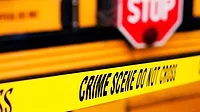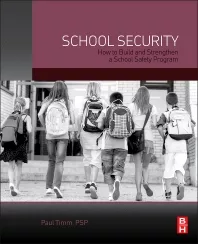School Shooting Tragedies: What Can Be Learned About Prevention
Education industry security leader shares things to consider after a major incident.

TW Farlow / iStock / Getty Images Plus / via Getty Images
One key lesson I’ve learned while working with Security magazine is the critical role security leaders play in sharing their experiences to help prevent future threats.
Following the December school shooting in Wisconsin, I connected with top education security experts to gather their insights on lessons learned from the tragedy. Over the past several months, I’ve shared these expert interviews in this column to spark meaningful discussions on improving school safety.
We started this series in the February issue Kristen Devitt, a former city of Madison Police Officer and current Director of Campus Safety at Oak Park & River Forest High School in Oak Park Illinois, and a 2023 Women in Security honoree. Our March Issue included an interview with Michael Dorn, Executive Director at Safe Havens International.
Here, we conclude the series with an interview with Guy Grace, Vice Chairman at Partner Alliance for Safer Schools (PASS).
Security: Often, after an event like an active shooter, there can be a public outcry for immediate changes or action to a security program. What advice do you have for security professionals in the K-12 space when faced with this?
Grace: As a retired school security director from Littleton Colorado, I can say that we dealt with our share of tragic events and situations. It is important to note to anyone reading this, that school communities deal with tragedy often and — most importantly — they avert tragedies more often that they experience them. I can say that vigilance is expected of school officials, but it goes often underappreciated and unnoticed. I called it walking on a razor’s edge when it came to myself and my fellow school safety professionals. Adverting and responding to tragedies takes great tolls mentally and physically especially over time. I would also point out that when tragic events happen, they also can foster the potential for more tragedy to happen within the community and outside the community.
With this invitation to contribute to this article I am honored to share some my observations and thoughts. How schools and communities handle the aftermath of a tragic event will vary. Within my district after a school shooting in 2013 physical security increased significantly with the implementation of many life safety components in technology such as access control, video management and other technology. Through these security improvements were planned long before the school shooting, they were very helpful to maintaining and rebuilding trust in attending the schools within our district. It is important to note that when a school experiences a tragedy like a school shooting, the place where it happened at will likely re-open soon in the future and your other schools within the district will still be open. In the aftermath of school shootings, school stakeholders within the schools and the community will be experiencing a wide range of emotions from fear to anger.
The role of K-12 stakeholders is to bring about what I call the “new normal” and confidence in the safety of the learning environment of not only the campus impacted but also the district and the community. This starts with getting the people who work, learn and teach in the schools confident in being safe in the schools while their loved ones in the community are confident that they are safe. That is the “new normal.” So how do we serve the teachers, students, workers, community and those K-12 staff members tasked with bringing around the so called “new normal?”
Some great resources are out there for dealing with the aftermath of a school attack. I always appreciated the messages and the endeavors of my fellow K-12 mental health professionals.
The response immediately following a school shooting that occurs at school is critical; an effective response has the potential to greatly decrease the likelihood of further trauma. Administrators and school crisis teams must be prepared to engage in effective crisis response and intervention as soon as the danger has passed and the school is secure. This was a very similar template that we followed in the aftermath of a school shooting and I am grateful to The National Association of School Psychologists (NASP) for outlining the responses needed.
Other Considerations
Prioritizing mental health: Encourage self-compassion and prioritize mental wellness. Identify and share evidence-based mental health treatments with schools. It starts with how we interact with the students at the home and from the schools. I love the information that The National Association of School Psychologists (NASP) provides to help called Talking to Children About Violence: Tips for Families and Educators.
Prioritizing the messages is something else that is so important to be considered. I found this template very helpful: Responding to School Violence: Tips for Administrators. In addition to NASP, the American School Counselor Association has resources and tools that can be helpful as well. School Security and Law Enforcement practitioners must be cognitive of creating life Unified Life Safety Interoperability with our mental health K-12 professionals.
Security: What are the pros and cons to this reactionary mind-set versus proactive?
Grace: My personal lessons learned were not to take a knee-jerk reaction in the aftermath of a school shooting but to be proactive. This was accomplished by risk assessments which refers to a process where we evaluated potential threats and vulnerabilities within our facilities to identify areas where security improvements are needed, aiming to create a safer learning environment for students and staff by proactively addressing potential risks; essentially, it's a systematic analysis of potential dangers within a school to prioritize safety measures. This included analyzing the attack on the school that was directly impacted.
Key points
- Comprehensive evaluation: A risk assessment looks at various aspects of school security including building access control, visitor management, emergency preparedness, potential threats from students or outsiders, and physical security features.
- Best practices based: The assessment process I used was guided by established safety standards and best practices developed by PASS, which incorporates expertise from education, public safety, and security industries.
- Tiered approach: Implement a layered approach to security, meaning schools identify and address risks based on their specific needs and priorities, not just relying on a single security measure.
- Site evaluation: Conducting a physical walkthrough of the school building and grounds to identify potential security weaknesses.
- Staff interviews: Gathering information from school staff about safety concerns and current security practices.
- Data analysis: Reviewing incident reports, student behavior records, and other relevant data to identify patterns or emerging threats.
- Threat assessment: Evaluating the likelihood and potential severity of different threats that could occur within the school
- Developing mitigation strategies: Creating a plan to address identified risks, including implementing security upgrades, staff training, and emergency response procedures.
The temptation for a knee-jerk reaction will be strong. However, a knee-jerk reaction could make things far worse for the school, district and communities recovery to the “new normal”.
Security: What role does mental health and behavioral threat assessment play in the overall security approach for schools?
Grace: Like any organization that invites people onto its property, schools must provide a reasonable level of security, safety, and emergency preparedness. School communities often struggle applying life safety and security components into their programs. Mental health and behavioral threat assessment play a crucial role in school security by proactively identifying students who might pose a potential threat of violence through early intervention and support, allowing for targeted interventions to address underlying mental health concerns before they escalate into dangerous situations. I would also recommend that we must be prepared for the threatening person(s) from the community. For both the internal and external threat this is why we need to create Unified Life Safety Systems Interoperability internally and externally. To me this developing the ability of the schools to work with law enforcement, medical, mental health, community and other stakeholders internally and externally to deal with threats that may happen to the schools.
Empower the Community to Share Concerns Through Anonymous Reporting
One of most effective implementations in school safety is the use of communication tools allowing students and others in the community to anonymously report potential threats and other concerns. This practice has demonstrated success in preventing potential violence. Students often know long before adults do what is occurring in their schools and communities, including fighting and bullying, substance abuse, dangerous and concerning behaviors, threats, depression, suicidal statements and self-injury, witnessed either in-person or online. Some states like Colorado mandate that public schools implement tip line programs. Tip reporting processes should be simple; providing students, parents and community members with a safe way to report information about any issues that concern their safety or the safety of others. It should also meet the following criteria:
- The anonymity of every report should be guaranteed — no caller ID or data tracking.
- The program should be available to all members of the community.
- Calls should be answered immediately, and service should be available 24 hours a day, every day of the week.
- Every tip should be investigated.
In Colorado, this tool is mandatory in all public schools. The State of Colorado provides a program called Safe2Tell. I have seen many lives being saved and violence averted through the use of the system. Most K-12 security teams will not have systems provided by the government to use; however, there are organizations out there that provide similar services to school districts.
Mental Preparation/Resiliency
Active threat situations are highly stressful to those involved in many ways. I from my experiences as responder in school security incidents over time developed CPTSD. I know many others of my co-workers and others in school safety who deal with their past experiences and new experiences every-day. It just not school attacks, but also the other hazards these people deal with often. Most people who work in K-12 are there to educate and the nature the young people for successful adult hood. When you think about it when school is session large percentage of your community’s population is in the schools. Some of the traumatic situations that colleagues and I responded to in addition to school shootings was suicides, violence and medical emergencies. This goes on in many schools and in some cases unavoidable. Responders who are responsible for district safety must be trained and ready to work through the shock and the pressure of the moment.
One area of preparedness often overlooked is the effects of live viewing/monitoring of these incidents via modern technology. This can be traumatic for security operators and other staff who are seeing live images of an incident and trying to coordinate a response to an active threat that may be miles away. Districts must also be cognizant that their employees are going to be impacted. Fire and police departments have mental health professionals dedicated to the staff on hand – often, schools do not. Employees must be empowered to understand the symptoms of post-traumatic stress disorder and understand how to seek help if it arises.
Looking for a reprint of this article?
From high-res PDFs to custom plaques, order your copy today!








